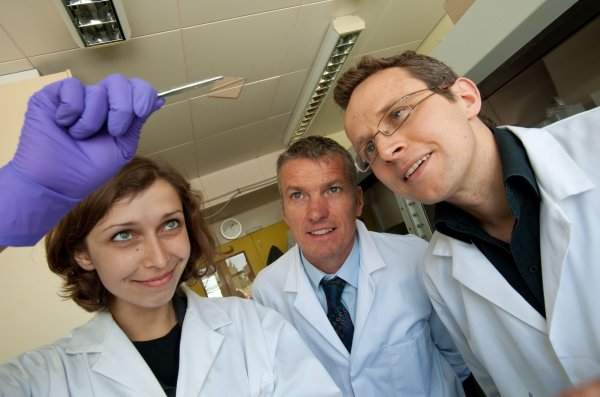Gold, kings have slaughtered for it and some people have teeth made out of it. But now it has a new use.
According to a press release, scientists at the University of Warwick have built a gold plated window as the see-through electrode for organic solar cells. Surprisingly they aren’t being in some rich person’s house.
You might expect these windows to be insanely expensive, but these electrodes actually have the potential to be quite cheap because the thickness of gold is only 8 billionths of a meter (39.3700787 inches). The ultra-low thickness means that at the current high price for gold the cost of the gold needed to make one square meter of this electrode is only around $7.35. Not bad.
The gold can also be easily recovered from the organic solar cell at the end of its life, and since gold is already used to make reliable connections it is no stranger to the electronics industry.

Organic solar cells have usually relied on Indium Tin Oxide (ITO) coated glass as the transparent electrode, but this is only because of the lack of suitable alternative. ITO is an intricate, unstable material with a high surface roughness and a propensity to crack when it bends if supported on a plastic foundation. ITO is also annoying to use because one of its primary components, indium, is pretty rare so that obviously makes it pretty expensive to use.
A super-thin film of air-stable metal (meaning air doesn’t make it break down) like gold would be a viable alternative to ITO, but until recently it has not been possible to place a film thin enough to be transparent without being too delicate and electrically resistive to be useful.
But now, thanks to research led by Dr. Ross Hatton and Professor Tim Jones in the University of Warwick’s department of Chemistry, it can be done. The Warwick team has developed a quick method for the preparation of strong, super-thin gold films on glass. The significant thing about this method is that it can be scaled up for large area uses like solar cells and the ensuing electrodes are chemically well-defined.
“This new method of creating gold based transparent electrodes is potentially widely applicable for a variety of large area applications, particularly where stable, chemically well-defined, ultra-smooth platform electrodes are required, such as in organic optoelectronics and the emerging fields of nanoelectronics and nanophotonics,” says Dr. Hatton.
The research paper that describes the method is entitled Ultrathin Transparent Au Electrodes for Organic Photovoltaics Fabricated Using a Mixed Mono-Molecular Nucleation Layer and it’s published in the journal Advanced Functional Materials. Unfortunately it’s behind a pay wall and I can’t post it here because I will probably get in trouble. Lame, maybe you can look it up at a library.
The paper documents the team’s efforts and if you are into the technology behind alternative forms of energy it is worth trying to find somewhere. Here’s a link to the journal article if have a way to get to it, I’m not a big fan of academic pay walls.
Information provided by The University of Warwick: News and Events






